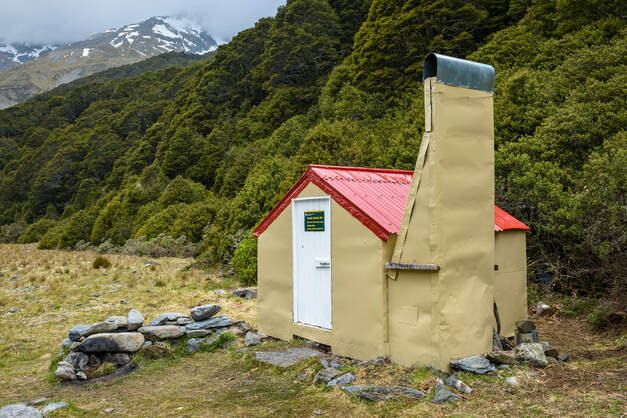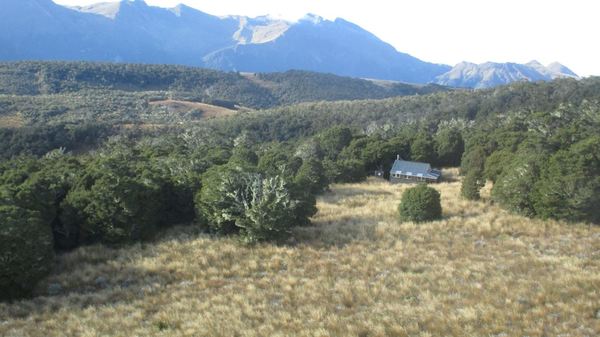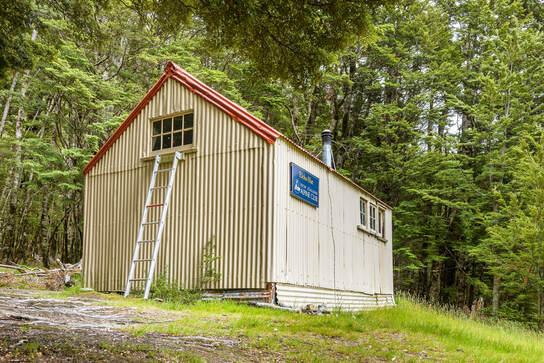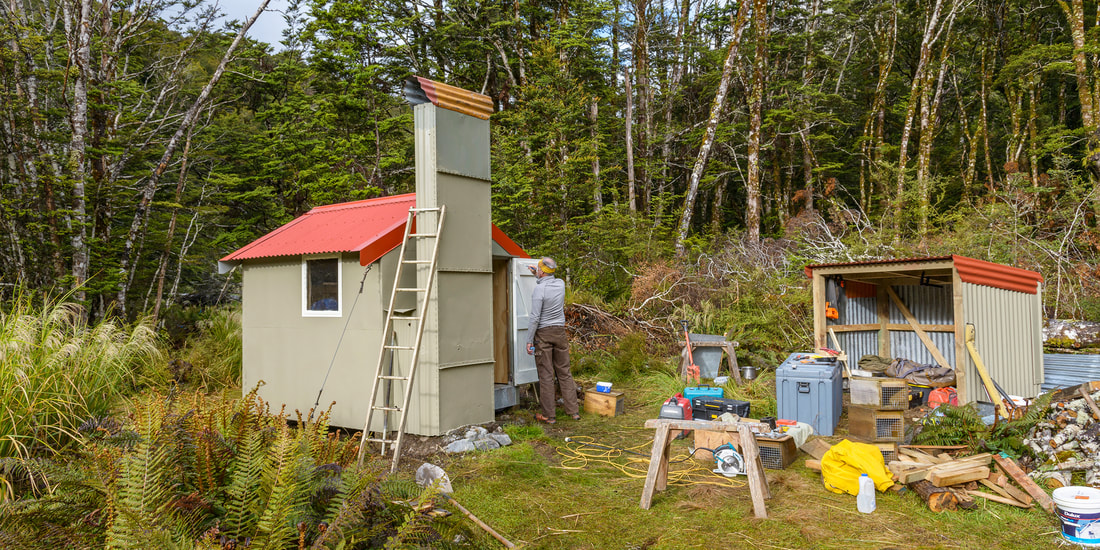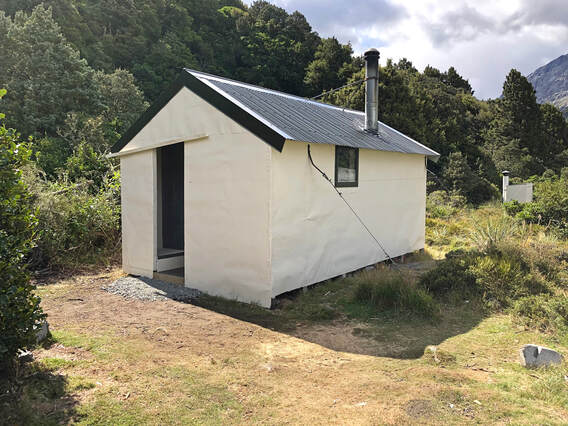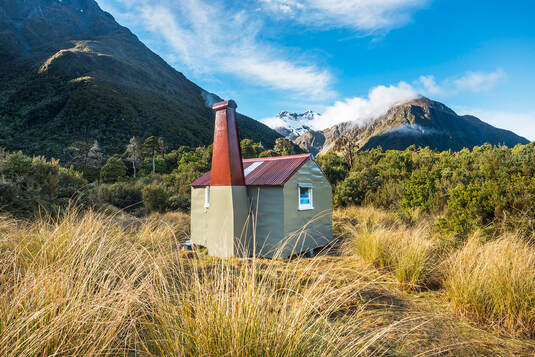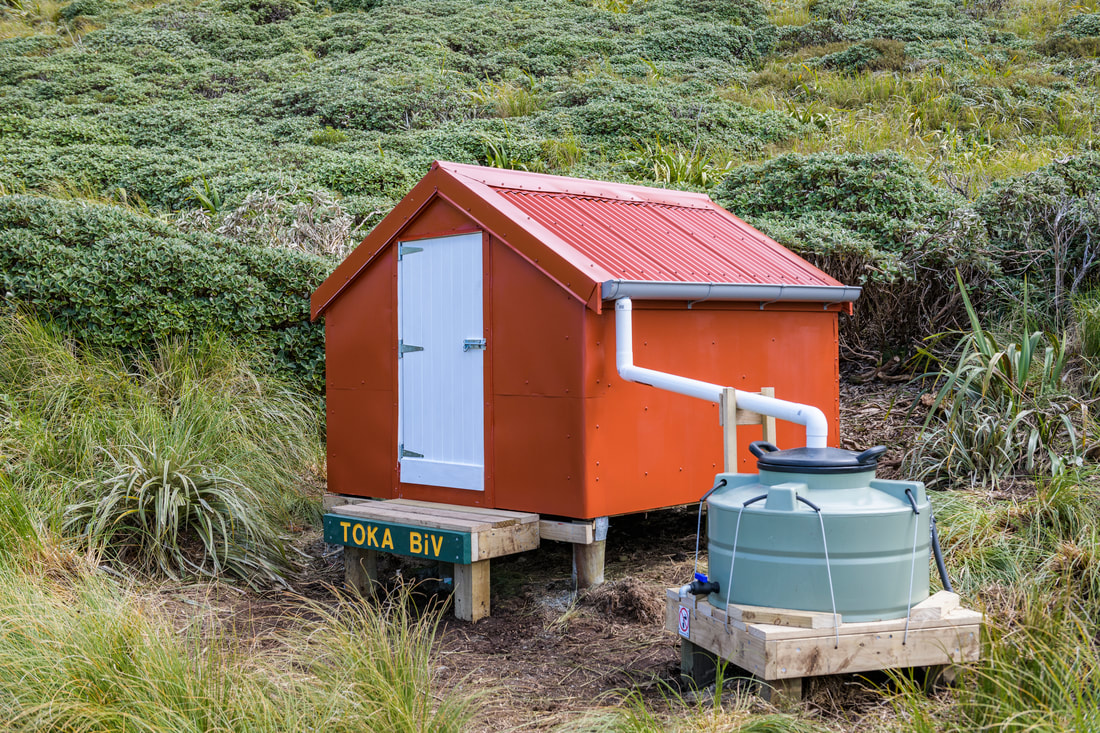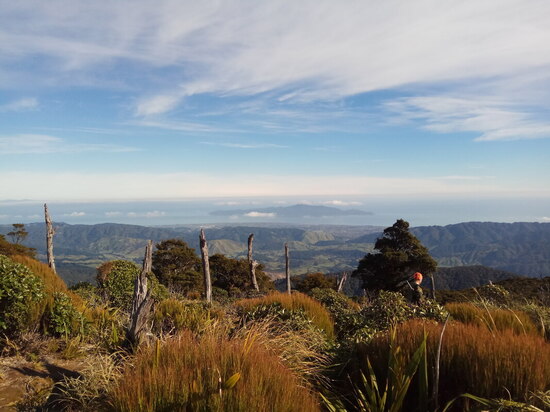|
South Huxley Biv was built in 1962 and is one of only a couple of crawl in S86 bivs built with a small fire built on the side of the hut (many of the Canterbury bivs were built with the fire on the front next to the offset door). It was the very first hut restored under the Outdoor Recreation Consortium in 2014 when it received a small grant for the work in the first funding round. Geoff Spearpoint, John Abbott and Rob Brown flew into the hut in late November 2014 with basic tools after having been told the hut was in good condition and only needed a paint. It would probably be the last time a group would fly in blind like this to do a project as it soon became apparent that the rear window had been leaking and most of the rear wall was rotten. Luckily they had brought in some extra hand tools and timber enabling basic repairs to be carried out to ensure the hut would remain water tight and serviceable.
In 1995, the Waimea Tramping Club adopted Balloon Hut, and has done a fabulous job of raising funds and maintaining the hut since. In a proposal for Round 2, which continued their involvement in the care of Balloon Hut, they applied for funding to go towards the installation of a wood burner, and the build of a woodshed.
Elcho Hut was built by the New Zealand Alpine Club in 1938 and this 12 bunk hut has stood the test of time nestled into its strategic location next to the Elcho Stream. It is one of the classic old club huts in the Southern Alps and has had regular maintenance over the years by the keen volunteers from the North Otago Section of the NZ Alpine Club. By 2016 the original old wooden windows had become rotten and the decision was made to replace them with some new, aluminium-framed windows of the same size.
For the past ten years the Hurunui College Nina Valley Restoration Group have had a trap line up the Nina River as part of bringing back the birds to this valley. The valley has a remnant population of Great Spotted Kiwi, Kaka, Kea and parakeets as well as a small population of Whio (Blue Duck). In the early years the trap line only went as far as the new 10 bunk Nina Hut, but as the project gained momentum the group pushed their ambition further up the valley. The group had established a permanent storage in the small two bunk Upper Nina Biv which they used for storing camping, spare traps and cooking gear for the group on extended trips. The site had no toilet for larger groups camping here and the storage was taking up alot of space in small biv. The Backcountry Trust identified this facility as a priority for investment and put together a team to go in and do the work in December 2018.
McCoy Hut in the headwaters of the Clyde River has long been a critical facility for trans-alpine trampers heading into or out of the Gardens of Eden and Allah, as well as being a good base for recreational tahr hunting. It was one of the first S70 6-bunk huts built in the Canterbury region and sits in a strategic location on the junction of Francis and McCoy Stream; two waterways that can easily flood when the weather turns bad.
Mungo Hut is a standard NZFS S81 hut built in 1962 to replace an old Internal Affairs deer cullers hut built on the same site. It sits on a tussock bench at the headwaters of the Hokitika surrounded by cedar trees and is one of the huts on the West Coast that takes a bit of effort to get to.
Toka Biv sits on the edge of a high shelf on the side of the Ngamoko Range in Ruahine Forest Park. This old flat tin roof S86 bivvy was built by the New Zealand Forest Service during an intensive period of installing these small huts in the area between 1958 and 1960. Further up the range, Tarn Biv and Kylie Biv remain in reasonable original condition but over the years a number of others were removed as they slipped into decline.
An hour from the summit of Mt Kapakapanui, Kapakapanui Hut is located on a now well-marked circuit in the Tararua ranges, around 2-3 hours from the Ngatiawa roadend. It’s a great stopover when heading on to Renata Hut or even as an easy place to head for a night in the hills.
The NZDA Kapiti Branch had felt for sometime this hut was in need of a tidy up but was initially thinking of just patching up the rough bits and painting the interior. After a site visit to confirm the general condition of the hut for himself, Mike Briggs soon realised that the project was about to develop into a full restoration and reclad of the hut. After a second visit with builder Glen Botha, they both agreed to a more extensive Scope of Works to protect the long term future of the hut. A schedule of materials was drawn up and quotes obtained, and used to complete the application made to the Backcountry Trust for the September 2018 round of funding. |
Projects
June 2023
|

